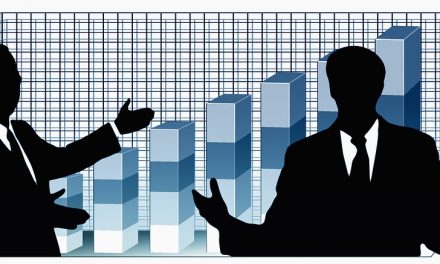Image by 3D Animation Production Company from Pixabay
In order to hit your target of reducing risk and making profits, competitive intelligence (CI) will help.
It’s difficult to stay on top of marketplace challenges and to invest in trends to get the most return on your investments. That’s why the CI process is sweeping the planet. CI enables a company to reduce risks and accelerate profits.
The returns are great, but it usually requires a hefty investment. Even back in 2007, Best Practices LLC said the average CI budget was $821,613. The average CI manager was paid $148,709.
 If anyone knows how to make CI cost effective, it’s author Seena Sharp. She wrote the book, “Competitive Intelligence Advantage: How to Minimize Risk, Avoid Surprises, and Grow Your Business in a Changing World.”
If anyone knows how to make CI cost effective, it’s author Seena Sharp. She wrote the book, “Competitive Intelligence Advantage: How to Minimize Risk, Avoid Surprises, and Grow Your Business in a Changing World.”
“It’s a pragmatic view of CI and how it can immediately provide benefits to those companies that use it,” she said. “Better decisions, reduced risk.”
Not only is she a great author, she is the knowledgeable as principal of consulting firm, Sharp Market Intelligence, www.sharpmarket.com.
Here’s an excerpt of an interview with Ms. Sharp:
Q: How do you differentiate CI from market research?
A: Market research (MR) captures what consumers say about what they’ve done or will do. Often, the reality is not the same as actual behavior. No one is deliberately lying – we just believe better about ourselves. We exercise four times a week, and eat five vegetables a day, etc. MR is more focused on the past and on intentions.
CI is more focused on what is actually happening in the marketplace and on the near future.
MR is more tactical and methods-driven, while CI is more strategic and results-driven.
MR results are mostly quantitative; CI results are factual, but also include insight, perspective, and raising questions.
MR relies mostly on consumers, while CI taps a wide range of constituencies, including competitors, suppliers, distributors, major customers, and experts.
With MR, software is widely used, while you cannot get CI from software. CI requires analysis and thinking, identifying patterns and discontinuities.
Q: What are your “11 Myths about Competitive Intelligence?”
A: The myths are:
1. Market research and competitive intelligence are the same.
2. Competitive and competitor intelligence are the same.
3. Data, information and intelligence are the same.
4. Competitive intelligence is spying.
5. There’s no information on private companies.
6. The best information comes from my industry.
7. Information is free.
8. Information costs too much.
9. Not every decision requires competitive intelligence
10. Competitive intelligence is a waste of time.
11. You cannot use software for CI. Software can gather and organize info – to a limited extent – but it cannot do the analysis of a seasoned, experienced, sophisticated businessperson.
Q: Why do you feel statistics, facts and forecasts are the wrong tools for gauging the future?
A: There are no statistics or facts about the future. Statistics and facts are very useful for providing an understanding of what has happened, for providing a foundation for understanding a company or industry or product. We can forecast the near future for planning purposes, as long as we understand the likelihood of their not being accurate.
No one has more statistical information or formulas for analyzing them than do economists and stockbrokers – and yet they can’t get it right. How can the rest of us, with far more limited tools available to us, hope to have accurate forecasts? So, as long as we understand their limitations, they will be useful – just not likely to be true.
Part of the reason we cling to forecasts is that they provide comfort. It’s a hard number that won’t be challenged, in comparison to an idea or opinion. The 1950s were a period of relative stability and expected growth, so it was far, far easier to forecast fairly accurately. Somehow, we’ve never let go of that belief, even for those who weren’t in the work force during that period. We want to be able to forecast and to get a sense of our future.
I have dozens of headlines from the mainstream newspapers with the following words in their headlines, “unexpected,” “lower than,” “surprising.” These all indicate that what was predicted by the experts just didn’t happen. And it doesn’t – not in a changing world, and what industry isn’t changing.
The reality is that few businesspeople recognize the changes that are happening in their industry, and when they do point to changes, they’re ones that have been happening for decades, such as more technology, faster, more convenient. But they rarely know about the changes that provide opportunities.
Q: What are the key indicators of change, opportunity and potential threats?
A: Differences. Change refers to something that’s different. So, any observation of what doesn’t fit or isn’t the same is ripe for consideration of an opportunity or threat. I counsel my clients to pay attention to surprises, as well as info that’s contradictory or unconventional, or challenges assumptions. This is the info that is typically ignored, laughed at, or underestimate. But it’s virtually always a first sign of market changes.
Q: Businesspeople typically are apprehensive about uncertainty. What’s an example of your principle, “surprise to avoid surprise?”
A: Customers who don’t fit your target profile. Virtually all businesses have customers who don’t match who the company thinks buys their products. They could be women or teens or rural dwellers, or people whose income is below $25,000, etc. Businesses are still stuck in defining their customers according to demographics. That’s useful – to a limited extent.
The book, “The Millionaire Next Door,” clearly painted a picture of wealthy individuals who have 10-year-old cars, and don’t buy jewelry or expensive cars. Yet, sellers of pricey items passionately believe that it’s the wealthy who have the means to buy their products. The reality is that your customers are those who want your product or service, not those who can afford it.
Q: What’s your philosophy on determining if changes are fads or trends?
A: I have studied the definitions of fads vs. trends – and while the matrix comparing them is reasonable, I would be hard-pressed to identify anything as a fad. Virtually all fads last several years, so while they may not have staying power, they’re not gone in a few months or a year, as most people think of fads.
On the other hand, when I ask people for trends in their industry, they mention things that have been going on for years and often for decades, such as more technology, faster, more convenient, etc. The point here is that most trends are facts, because people don’t recognize trends until they’ve been happening for years. They will categorize virtually anything that’s different from conventional wisdom as a trend, when it’s really a fact. This could include customers who don’t fit the profile.
Think about people older than 50. Their purchases or activities are constantly and still referred to as something new or different, when the reality is that it’s been true for decades. Many of the attention that boomers have been getting are things that people over 80 have been doing for decades – dating, having sex, exercising, working, etc. Not new, but many refer to it as a trend.
Q: What do you consider the importance of substitute and indirect competitors and the danger of focusing on competitors?
A: Any customer or prospect who buys a product or service from a company that is not a direct competitor, is a substitute or indirect competitor. For example, if you need a financial planner, but had a bad experience with one in the past and refuse to use another one, you might get your needs met from a wide variety of other companies – such as banks, lawyer, accountant, and software, etc.
Now, a financial planner will not consider any of these to be competitors. But if they lose business to a lawyer, the lawyer is their competitor for that particular service. The important thing to recognize is why is a non-industry professional getting the business? This is the key to satisfying customers. The financial planner will usually refer to price, but in industry after industry that we have investigated, price is virtually third or fourth in importance. It’s only first when the companies have not differentiated themselves, so that to the customer, all seem the same.
Q: What else would you like to add?
A: CI is not gathering data, and it’s not focusing on competitors. It’s going way, way, way beyond that to gaining insight and perspective about a world that is constantly changing and changing in unexpected ways.
The value from CI should save far more money than the investment, such as hiring an accountant to do your taxes. CI tells you – in advance – what you will discover later. The reality always presents itself. It’s just a matter of when you want to learn it.
Disclosure: Not only is she authoritative, Ms. Sharp is a fun consultant with whom to work as I’ve known her many years.
From the Coach’s Corner, want more of her insights? See this article: Hottest Tactics to Beat Your Competitors
“I have been up against tough competition all my life. I wouldn’t know how to get along without it.”
-Walt Disney
__________







